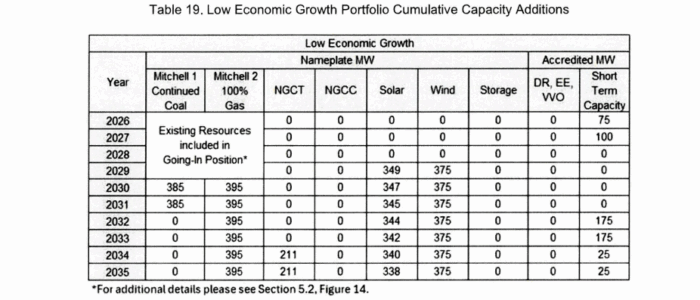Appalachian Power May Stop Burning Coal By 2035

October 13, 2025 - Appalachian Power submitted its plan for the next 10 years to state regulators, and changes could be coming to its coal plants.
Appalachian Power filed its integrated resource plan last week with the West Virginia Public Service Commission.
The company mapped out six scenarios for its Mountaineer, Mitchell and Amos plants.
Only Mountaineer would stay in operation through 2035 in all scenarios, and it may be converted from coal to 100% natural gas.
In some scenarios, Amos would retire completely by 2035 or be partially converted to gas.
The Mitchell plant also would partially retire or partially convert from coal to gas.
The scenarios contemplate a delay in U.S. Environmental Protection Agency power plant rules that are currently under review by the Trump administration.

Appalachian Power’s low-growth scenario has Mountaineer and one unit at Amos run with gas and two other units at Amos retire, with the addition of wind, solar and storage.
Credit: Appalachian Power
Karen Wissing, a spokeswoman for Appalachian Power, says if those rules are delayed, “maintaining coal operations at all three plants would be the most cost-effective option for our customers.”
“However,” she added, “if the EPA rules are not modified from their current form, conversion to natural gas generation would become a more cost-effective option.”
The company’s plan also outlines scenarios for both high economic growth or low economic growth.
A low-growth scenario would lead to the retirement of all coal generation by 2032.
The planning document outlined options for replacing the plants with wind, solar and combined-cycle natural gas.
The Amos and Mountaineer plants provide power to Appalachian Power customers in southwest Virginia.
Virginia’s Clean Economy Act sets targets for emissions reductions in electricity generation, something West Virginia lacks.

Appalachian Power’s low-growth scenario for Mitchell has one unit running with gas and the other retiring, with the addition of wind and solar.
Credit: Wheeling Power
Of the three plants, Mountaineer had the highest capacity factor this year through July of 64%.
Amos had a capacity factor of 34% and Mitchell 25%. The average in the PJM region is about 40%. The West Virginia PSC and the legislature would prefer the plants operate closer to 69%.
An expert witness testified to the PSC over the summer that the three plants lost $81 million in the 12 months ending in February. The company has said it burned coal at a loss to manage an excess supply at the plants for worker safety.
It also has said that breaking coal contracts would have cost electricity customers more.
The PSC’s Consumer Advocate Division has asked the commission to revisit the coal plant losses. The PSC denied Appalachian Power’s application to increase customer rates but did not disallow the cost recovery for the uneconomic operation of the plants.

